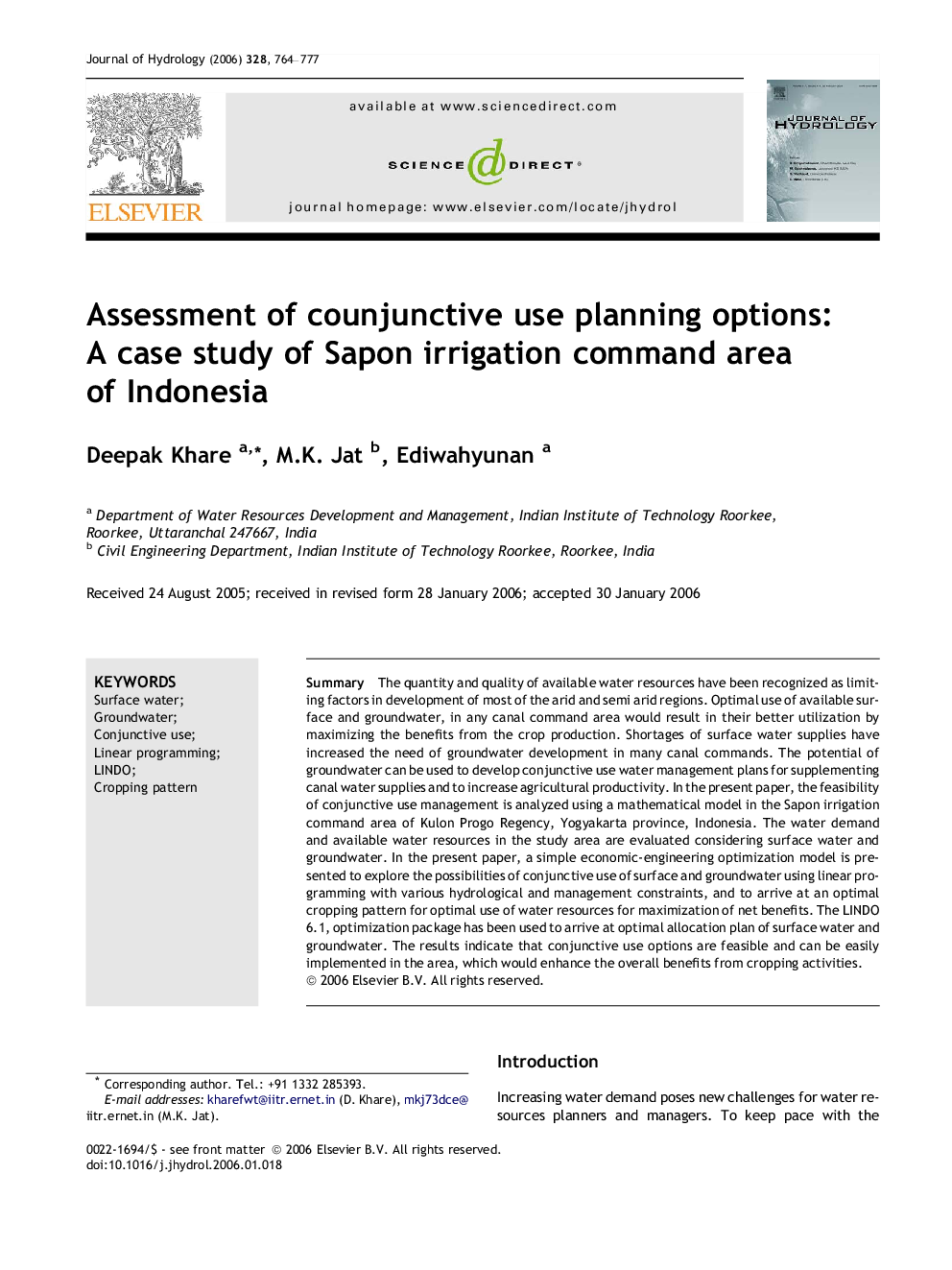| Article ID | Journal | Published Year | Pages | File Type |
|---|---|---|---|---|
| 4580610 | Journal of Hydrology | 2006 | 14 Pages |
SummaryThe quantity and quality of available water resources have been recognized as limiting factors in development of most of the arid and semi arid regions. Optimal use of available surface and groundwater, in any canal command area would result in their better utilization by maximizing the benefits from the crop production. Shortages of surface water supplies have increased the need of groundwater development in many canal commands. The potential of groundwater can be used to develop conjunctive use water management plans for supplementing canal water supplies and to increase agricultural productivity. In the present paper, the feasibility of conjunctive use management is analyzed using a mathematical model in the Sapon irrigation command area of Kulon Progo Regency, Yogyakarta province, Indonesia. The water demand and available water resources in the study area are evaluated considering surface water and groundwater. In the present paper, a simple economic-engineering optimization model is presented to explore the possibilities of conjunctive use of surface and groundwater using linear programming with various hydrological and management constraints, and to arrive at an optimal cropping pattern for optimal use of water resources for maximization of net benefits. The LINDO 6.1, optimization package has been used to arrive at optimal allocation plan of surface water and groundwater. The results indicate that conjunctive use options are feasible and can be easily implemented in the area, which would enhance the overall benefits from cropping activities.
